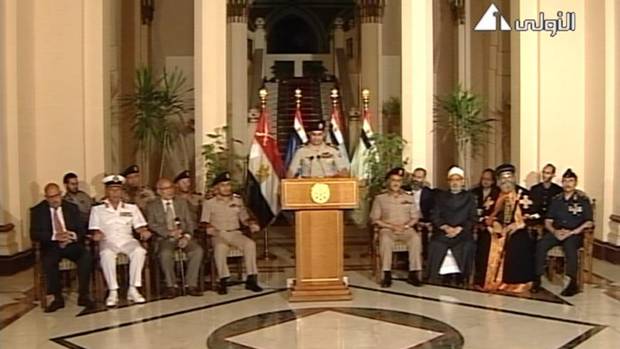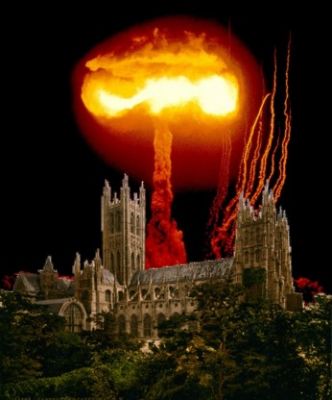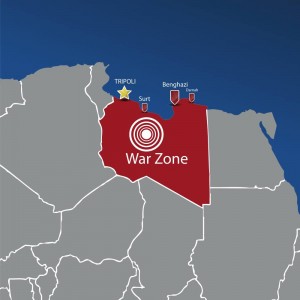At the pivotal event announcing the fall of President Mohamed Morsi, a number of symbolic leaders stood with General Abdel Fatah al-Sisi in a coalition backing this action, following days of massive public protests dominated by young, mostly secular Egyptians.
Yes, one of those leaders was Coptic Orthodox Tawadros II, who called the military takeover a “defining moment in the nation’s history.” Of course, Egypt’s grand imam, Sheik Ahmed el-Tayeb, also took part in that press conference. So did the leader of the Constitution Party, Mohamed el-Baradei, Nobel Laureate Mohamed El Bareidi, Tamarod movement leader Mohamed Badr, former Morsi advisor Sekina Fouad and several others.
Anyone who has followed religion trends in Egypt for several decades knows that it was unusual for Tawadros to take such a public stand, knowing that Coptic Christians have always been a convenient scapegoat for mob violence in Egypt — no matter who is in power. Things were getting worse under Muslim Brotherhood control, but things were also bad under previous military strongmen.
The crucial point is that Tawadros did not stand alone, but as part of a coalition that included key Islamic players in tensions with the Muslim Brotherhood.
Now, with that in mind, read the following chunk of a gripping New York Times report from David D. Kirkpatrick:
A tense quiet settled over Cairo as the city braced for new protests by supporters of the ousted president, Mohamed Morsi, after the Friday Prayer. The new government authorized the police to use lethal force if they felt endangered.
Many of those waiting outside the makeshift morgue talked of civil war. Some blamed members of Egypt’s Coptic Christian minority for supporting the military takeover. A few argued openly for a turn to violence.
“The solution might be an assassination list,” said Ahmed, 27, who like others refused to use his full name for fear of reprisals from the new authorities. “Shoot anyone in uniform. It doesn’t matter if the good is taken with the bad, because that is what happened to us last night.”
So some blamed the nation’s 10 percent Coptic minority, even though the coalition that — in that crucial press conference — endorsed the fall of Morsi was much broader than that. But the Coptic-blame game is a statement of fact on the street. Kirkpatrick handles other references to the views of this symbolic religious minority with similar caution:













